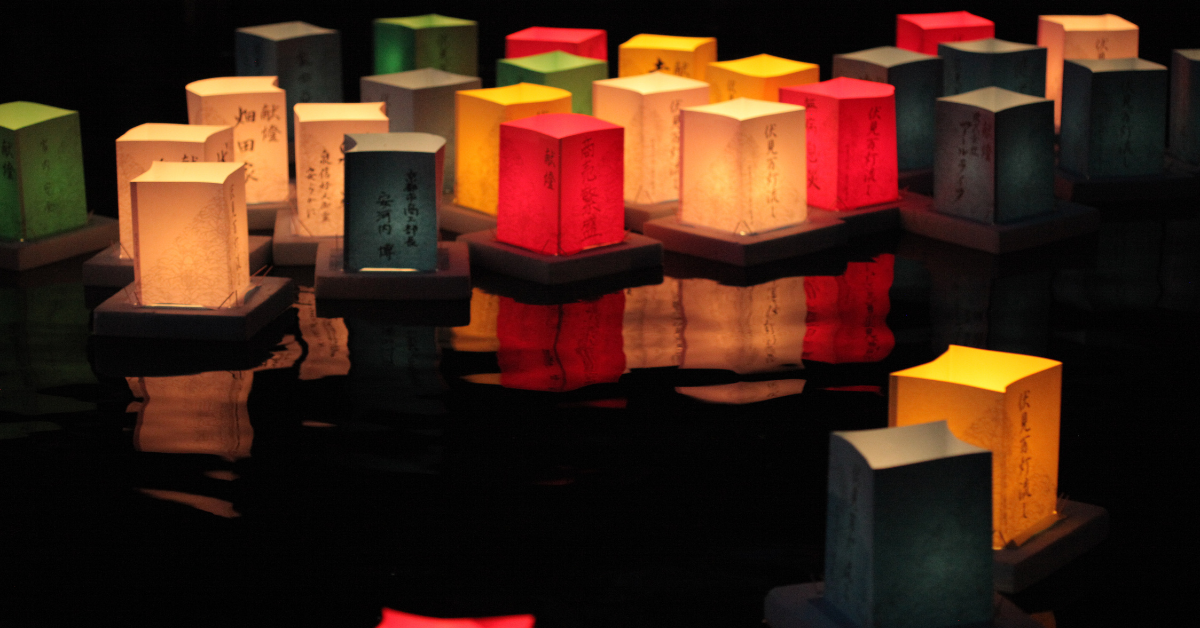Obon is one of Japan’s most spiritual and culturally important annual traditions. It is a time when families gather to welcome the spirits of their ancestors, showing gratitude, respect, and a deep sense of connection between generations. Unlike simple holidays, Obon combines religious roots with community bonding and family reunion, making it a meaningful event across the country.
What Is Obon and Where Did It Come From?
Obon is a Buddhist-based tradition in which Japanese people welcome and honor the spirits of their deceased ancestors. Its origin lies in the story of Mokuren, a disciple of Buddha, whose mother suffered in the realm of hungry ghosts. Buddha advised Mokuren to offer food to monks, which led to his mother’s salvation. This act became the basis for today’s Obon.
The story emphasizes gratitude to parents and the importance of family bonds. Obon is seen as a time when the worlds of the living and the dead briefly intersect, offering a chance to reflect on the continuity of life and ancestry.
When Is Obon Held? Regional Differences Across Japan
Although Obon is a nationwide event, the timing varies by region. After Japan adopted the Gregorian calendar during the Meiji era, some regions adjusted the schedule accordingly. Urban areas like Tokyo celebrate Obon in mid-July, while most rural regions observe it in mid-August, also known as Monthly-Delayed Obon. In Okinawa and the Amami Islands, Obon is celebrated according to the lunar calendar, incorporating unique local traditions.
| Region | Dates | Characteristics |
|---|---|---|
| Tokyo/Urban | July 13–16 | Based on the new calendar, also used by offices |
| Most Regions | August 13–16 | Widely observed as Monthly-Delayed Obon |
| Okinawa/Amami | Lunar July 13–15 | Features distinct dances and rituals |
Main Obon Rituals and Their Meanings
Obon follows a sequence of rituals to welcome, honor, and send off ancestral spirits. These include cleaning the home altar, offering seasonal fruits and vegetables, visiting graves, and participating in Bon Odori, a communal dance event. On August 13, people light a welcoming fire (mukaebi), and on August 16, they light a farewell fire (okuribi) to guide the spirits back.
| Ritual | Date | Description |
|---|---|---|
| Mukaebi | August 13 | Lighting a welcoming fire to guide spirits home |
| Grave Visit | Throughout Obon | Cleaning graves, offering flowers and incense |
| Bon Odori | Various dates | A communal dance to entertain and honor spirits |
| Okuribi | August 16 | Lighting a farewell fire to send spirits back |
- Symbolism Behind Obon Offerings
Each offering has a specific purpose. Shoryou-uma, or spirit horses made from cucumbers and eggplants, are believed to carry spirits swiftly home and gently back to the other world. Offerings like fruits and rice dumplings symbolize seasonal gratitude and peace for the departed.
| Offering | Meaning |
|---|---|
| Shoryou-uma (Cucumber Horse) | A fast ride for the spirits to return home |
| Shoryou-ushi (Eggplant Cow) | A slow, gentle ride back to the other world |
| Fruits and Dumplings | Expressions of gratitude and comfort for the spirits |
Are There Similar Customs in Other Countries?
Many countries have ancestor-honoring traditions. In China, the Zhongyuan Festival is held on the 15th day of the 7th lunar month. In Korea, families gather for Chuseok, offering food to ancestors and celebrating harvest. In the West, Día de los Muertos in Mexico and Halloween in the U.S. involve remembrance of the dead, but their tone is more festive than sacred.
| Country/Region | Festival Name | Characteristics |
|---|---|---|
| Japan | Obon | Welcoming, honoring, and sending off spirits |
| China | Zhongyuan Festival | Paper money and food offerings influenced by Taoism/Buddhism |
| Korea | Chuseok | Family reunions and ancestor appreciation |
| Mexico | Día de los Muertos | Colorful altars and joyful celebration of the dead |
| USA | Halloween | Festive, costume-based, less spiritual |
The Relevance of Obon in Modern Society
Even today, Obon plays a vital role in Japanese life. In a time of urbanization and aging populations, it remains a rare opportunity for family reunions and intergenerational exchange. Events like Bon Odori help strengthen community ties, and participation in rituals can offer emotional healing and connection.
Moreover, Obon is increasingly being introduced to foreign residents and tourists through cultural workshops. Activities such as making shoryou-uma or learning traditional dances serve as effective means of cross-cultural understanding and multicultural coexistence.
Conclusion
Obon is more than just a seasonal tradition. It embodies Japanese values of gratitude, familial connection, and respect for the dead. Although similar events exist worldwide, Obon uniquely blends spiritual depth with concrete rituals, making it a rare and meaningful cultural phenomenon.
As globalization continues, Obon offers a way not only for Japanese people but for the global community to connect through shared human experiences. Its preservation and international sharing can build bridges across cultures and generations.






